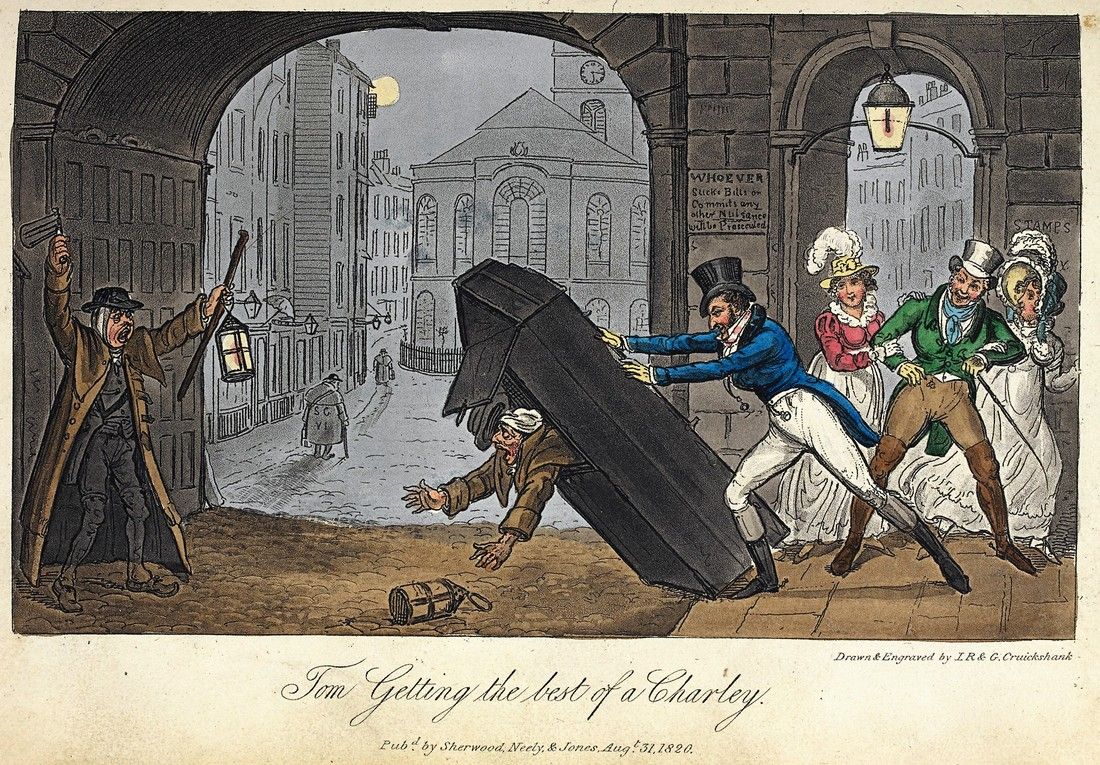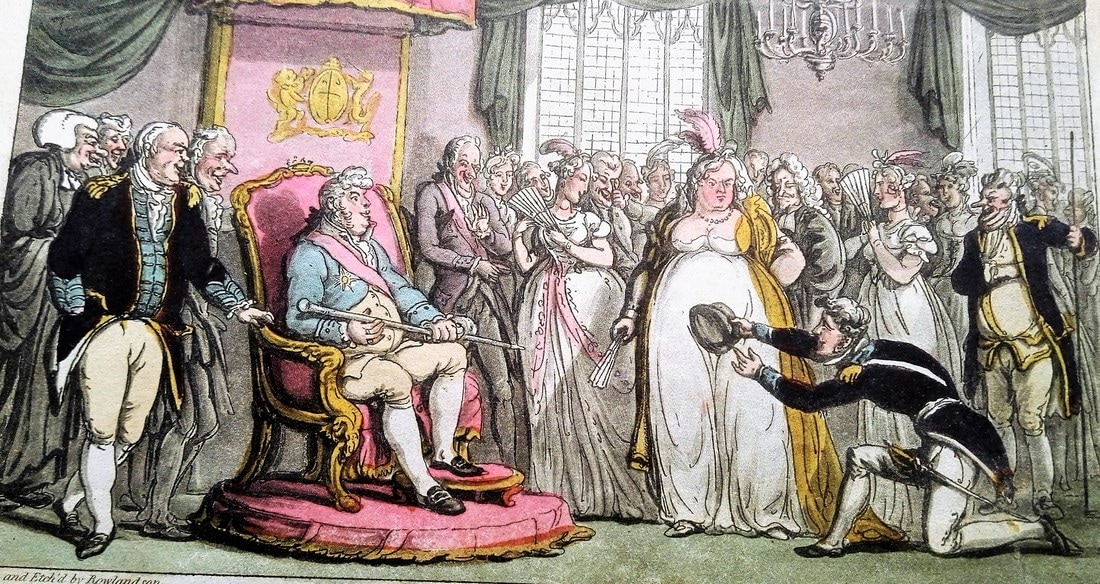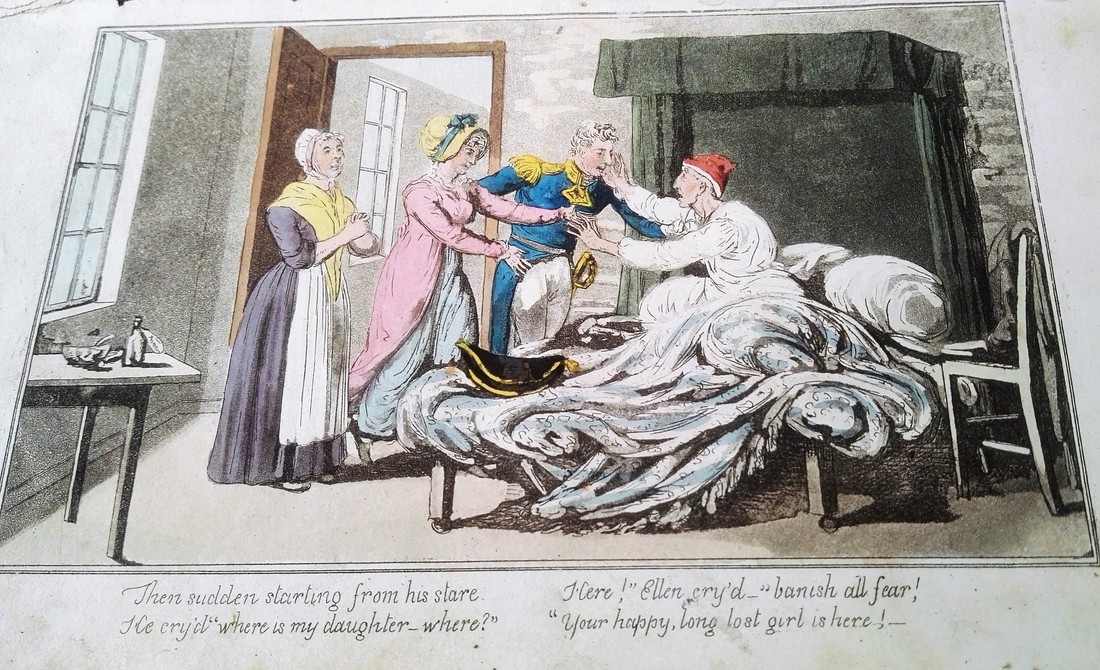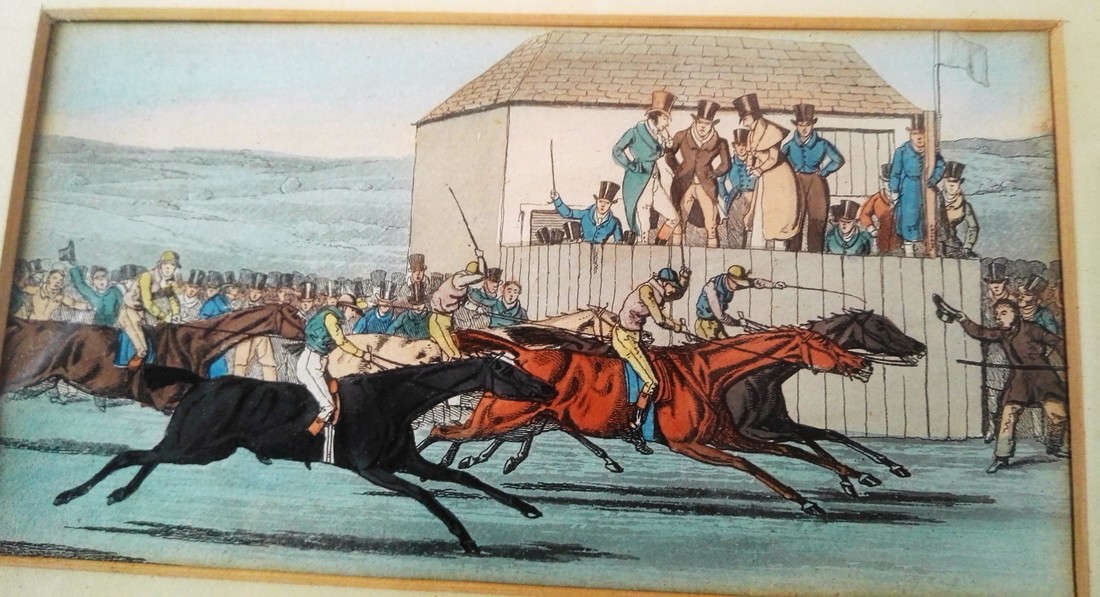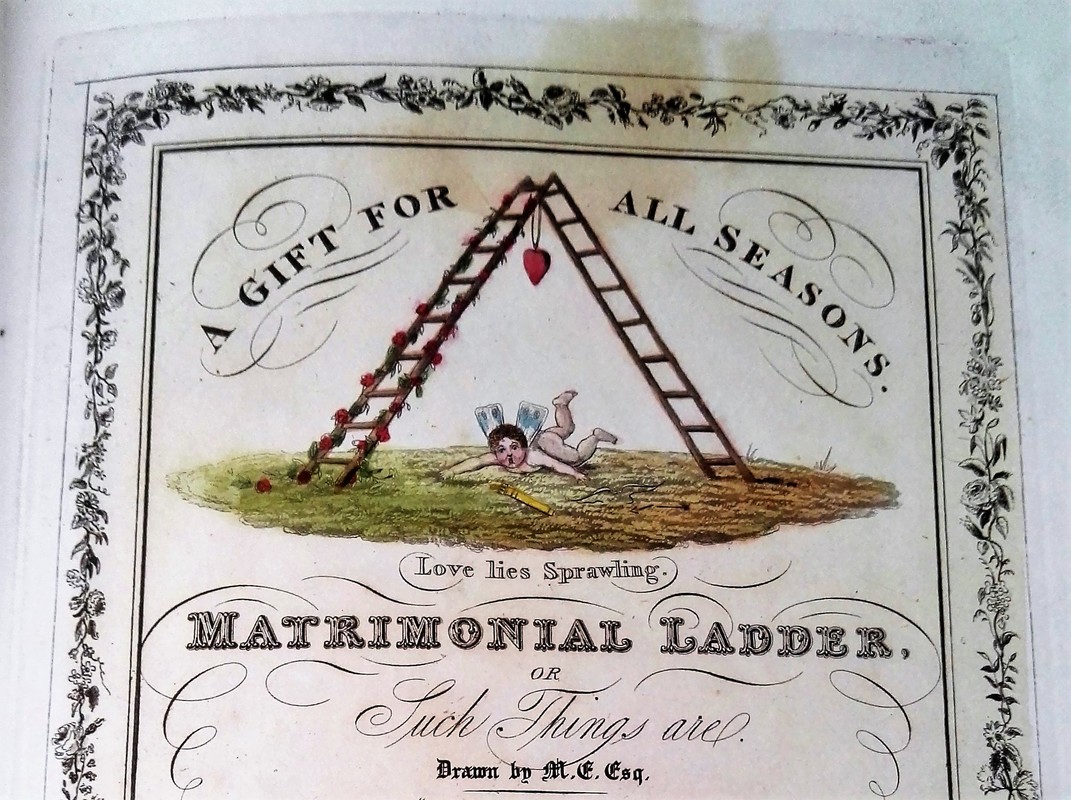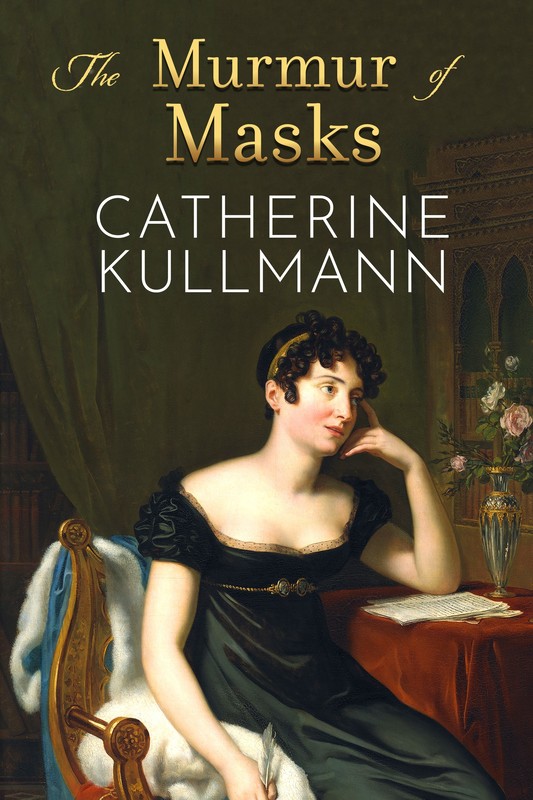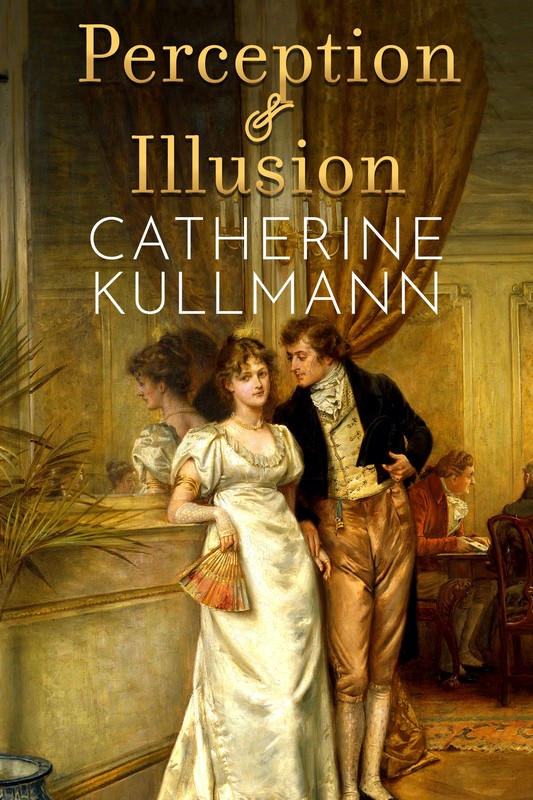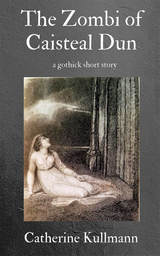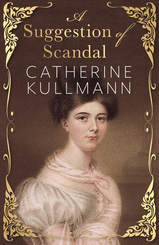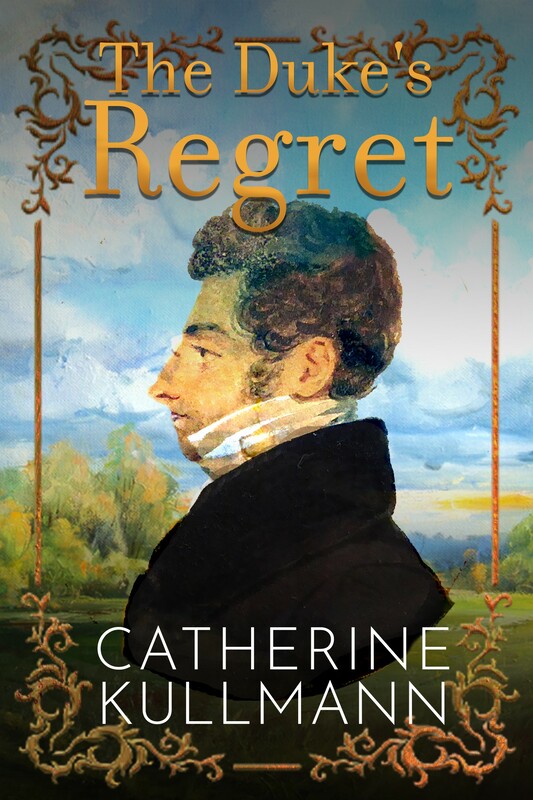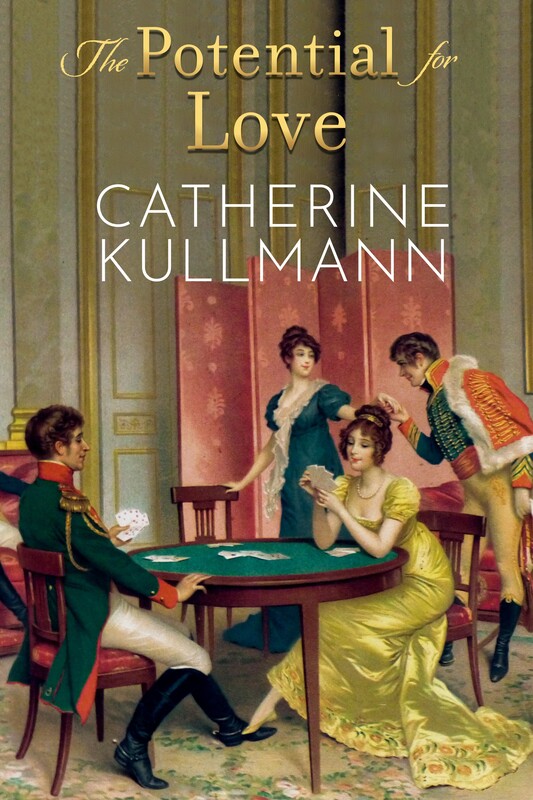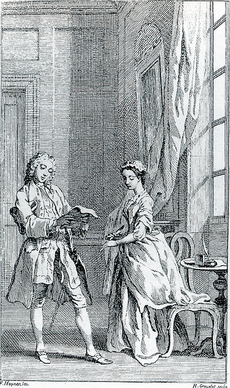
The history of book illustration stretches far back into antiquity. From the earliest illustrated scrolls via the splendid illuminated manuscripts of the middle ages to today’s sumptuous photo books, ornamentation and images have added an extra dimension to the pleasure of reading for over two millennia. With the rise of the English novel in the eighteenth century, publishers began to include engravings, frequently just a frontispiece, in their volumes. Soon they started to issue special, illustrated limited editions of successful novels such as Richardson’s Pamela (left).
By the end of the century, mechanical improvements made the printing of engravings much cheaper and a huge market had developed for all sorts of prints, including caricatures, especially hand-coloured ones. In 1815, David Robarts, a former officer who had served in the Peninsular War, published a satirical poem The Military Adventures of Johnny Newcome. It was embellished with fifteen coloured sketches by T Rowlandson, a leading artist and caricaturist of the day. Where previous illustrations had been straightforward, black and white depictions of pivotal scenes, Rowlandson matched his drawings to Robarts’ satire. Here we see our hero present the trophies from the Peninsula to the Prince Regent.
By the end of the century, mechanical improvements made the printing of engravings much cheaper and a huge market had developed for all sorts of prints, including caricatures, especially hand-coloured ones. In 1815, David Robarts, a former officer who had served in the Peninsular War, published a satirical poem The Military Adventures of Johnny Newcome. It was embellished with fifteen coloured sketches by T Rowlandson, a leading artist and caricaturist of the day. Where previous illustrations had been straightforward, black and white depictions of pivotal scenes, Rowlandson matched his drawings to Robarts’ satire. Here we see our hero present the trophies from the Peninsula to the Prince Regent.
Johnny Newcome was hugely successful and immediately imitated. The Adventures of a Post-Captain, of 1817 had twenty-five characteristic engravings by Mr Williams. The illustrations are highly dramatic and instead of a caption the relevant quotation is printed beneath each picture. In some cases this is dialogue and we begin to see the marriage of text and image. Below, the gallant captain restores Fair Ellen, who was abducted by the Moors, to her aged father. The text reads:
Then sudden starting from his stare/ He cry'd "where is my daughter-where?"
Here!" Ellen cry'd-"banish all fear!/ "Your happy, long-lost girl is here!
Then sudden starting from his stare/ He cry'd "where is my daughter-where?"
Here!" Ellen cry'd-"banish all fear!/ "Your happy, long-lost girl is here!
It was not long until the Johnny Newcome spin-offs had exhausted the military and naval possibilities. In 1820, Pierce Egan published Life in London, or the Day and Night Scenes of Jerry Hawthorne, Esq., and his Elegant Friend, Corinthian Tom, accompanied by Bob Logic, the Oxonian in their Rambles and Sprees Through the Metropolis. The entertaining adventures of Tom and Jerry were embellished with thirty-six scenes from real life, designed and etched by I R and G Cruikshank with a graphic style that reminds us of later comics. At the top, you see Tom, watched by Jerry, Getting the best of a Charley or upsetting the box of a night-watchman.
Life in London was another best-seller and, as with Johnny Newcome, it was quickly succeeded by a series of books looking to capitalize on Egan’s success. Foremost among these was Real Life in London, described as by An Amateur but later ascribed to Egan. Below: Ascot Races - Tom and Bob winning the long odds from a knowing one.
Life in London was another best-seller and, as with Johnny Newcome, it was quickly succeeded by a series of books looking to capitalize on Egan’s success. Foremost among these was Real Life in London, described as by An Amateur but later ascribed to Egan. Below: Ascot Races - Tom and Bob winning the long odds from a knowing one.
However, although the proportion of illustrations to text increases constantly, we do not yet have the union of text and picture that marks the true comic or graphic story. But we are getting there. In 1825, Thos. McLean of London published The Matrimonial Ladder, with a subtitle of Love Lies Sprawling. Drawn by M. E. Esq, in eighteen full-page illustrations, each with an accompanying verse, it casts a sardonic eye on the romance of Henry and Maria. A couple of years ago I was lucky enough to find a copy at an antique book fair. Here is a detail from the title page.
To mark the first anniversary of the publication of my debut novel The Murmur of Masks, I have decided to share this post-Regency gem with fans of the era and will post the plates and text on my blog over the coming weeks.
I shall post a link to each blog on my Facebook page fb.me/catherinekullmannauthor. To be kept informed of new posts, you can 'like' the page or alternatively subscribe to my newsletter on the home page of this website.
I shall post a link to each blog on my Facebook page fb.me/catherinekullmannauthor. To be kept informed of new posts, you can 'like' the page or alternatively subscribe to my newsletter on the home page of this website.
